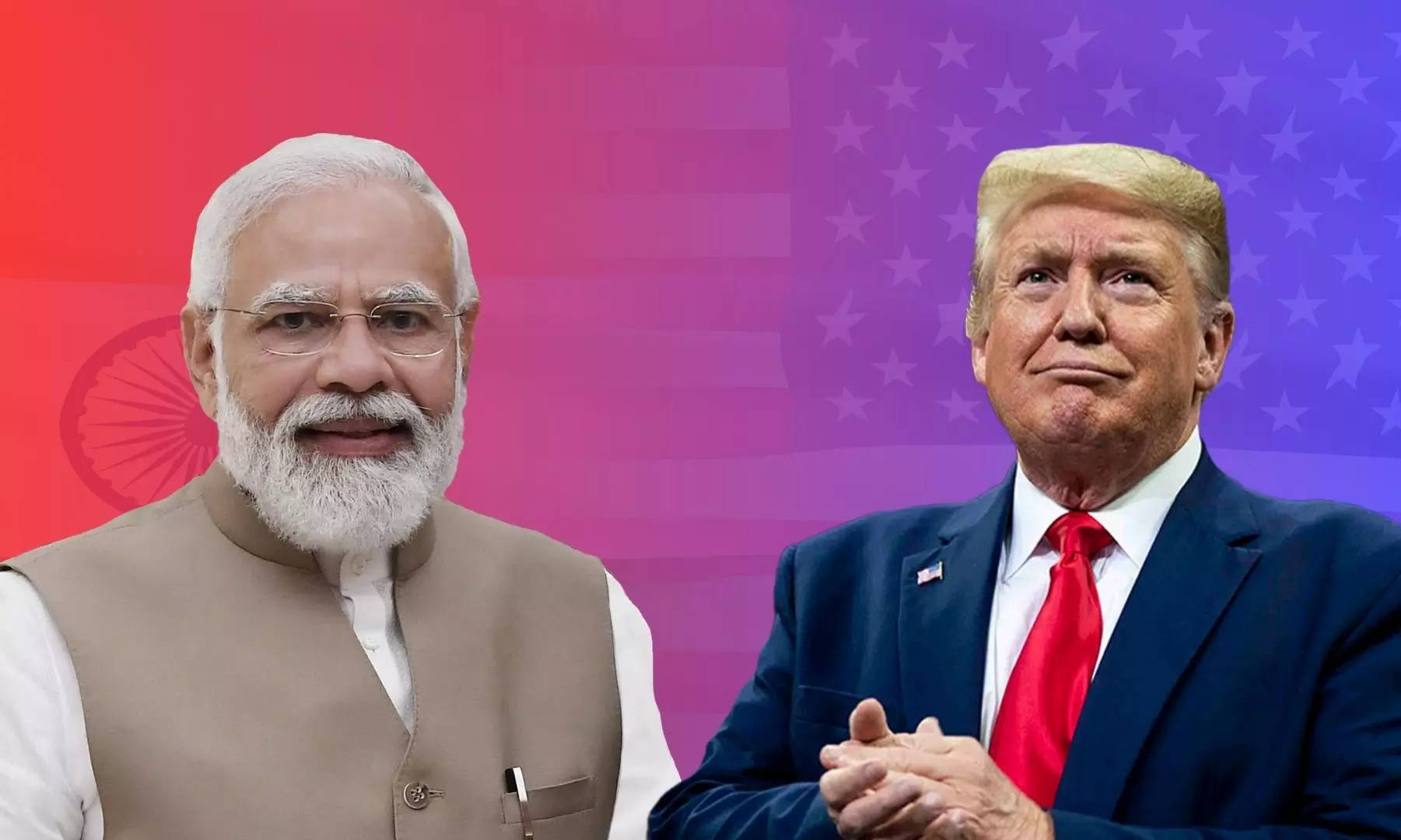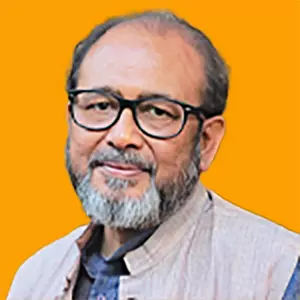
- Home
- India
- World
- Premium
- THE FEDERAL SPECIAL
- Analysis
- States
- Perspective
- Videos
- Sports
- Education
- Entertainment
- Elections
- Features
- Health
- Business
- Series
- In memoriam: Sheikh Mujibur Rahman
- Bishnoi's Men
- NEET TANGLE
- Economy Series
- Earth Day
- Kashmir’s Frozen Turbulence
- India@75
- The legend of Ramjanmabhoomi
- Liberalisation@30
- How to tame a dragon
- Celebrating biodiversity
- Farm Matters
- 50 days of solitude
- Bringing Migrants Home
- Budget 2020
- Jharkhand Votes
- The Federal Investigates
- The Federal Impact
- Vanishing Sand
- Gandhi @ 150
- Andhra Today
- Field report
- Operation Gulmarg
- Pandemic @1 Mn in India
- The Federal Year-End
- The Zero Year
- Science
- Brand studio
- Newsletter
- Elections 2024
- Events
- Home
- IndiaIndia
- World
- Analysis
- StatesStates
- PerspectivePerspective
- VideosVideos
- Sports
- Education
- Entertainment
- ElectionsElections
- Features
- Health
- BusinessBusiness
- Premium
- Loading...
Premium - Events

There are many parallels between them though the contexts are different; the first is the deification of the Constitution while trampling on its letter and spirit
The announcement by US President-elect Donald Trump that the duo of Elon Musk and Vivek Ramaswamy, each with multiple attributes, will co-lead the newly created Department ofGovernment Efficiency (DOGE) evokes a sense of déjà vu.
In a formal statement made on the Trump-Vance-Transition platform, Trump wrote that the two champions of free enterprise will in conjunction lead the newly-created DOGE to shine light on the way to follow for Trump 2.0 to “dismantle Government Bureaucracy, slash excess regulations, cut wasteful expenditures, and restructure Federal Agencies.”
Call for change
The Trump statement harks back to 2013-14, when Narendra Modi dramatically ran for Prime Ministership on multiple slogans, strung together with one word: Badlao, or Change.
Also read | The message from Donald Trump
Among his various coinages – each of which was beguiling but fuzzy because Modi has never been one for specifics, except when it comes to donning the role of social polariser – was the one very similar to what Trump has promised now to the American people: “Maximum governance, minimum government”.
As recently as February 2024, Modi said neologism has been his “biggest principle” and he has consistently emphasised on “creating an environment in which a sense of enterprise and energy in citizens grows". "I believe that it is the job of the government to ensure that government interference in people’s lives is minimal," he said.
Clearly, his goal remains a work in progress.
Making lives better
Likewise, Trump, sounding quite like Modi did in 2013-14, stated that he was certain that DOGE would pave the way for “large-scale structural reform, and create an entrepreneurial approach to government never seen before.”
Also read | US polls: H1-B and student visas, tariff policies at stake for Indians
Like Modi, Trump too trumpeted that his initiative was aimed at “making lives better for all Americans.”
It is wise to recollect that Modi’s promise to scale down government enchanted numerous entrepreneurs, start-ups, aspiring entrepreneurs, business students, traders, venture capitalists, etc.
Several of them, like numerous Trump backers from the world of corporations and conglomerates, see government and its regulations as hurdles in the path of business and innovation.
Deification of the Constitution
There are several other parallels between Trump and Modi although the contexts are different. The first is obviously the deification of the Constitution while trampling on its letter and spirit.
While Indians are aware of Modi’s success in fundamentally altering facets of the Indian Constitution through amendments, Trump too, while announcing the Musk-Ramaswamy appointment, drew on his country’s “Holy Book”.
Watch: Why the Hindu right-wing loves Donald Trump
He stated that his government, in conjunction with the duo “will work together to liberate our Economy, and make the Government accountable to ‘WE THE PEOPLE’.”
The jury need not deliberate for long to decide whether or not Trump provides for “a more perfect Union, establish Justice, insure domestic Tranquillity, provide for the common defence, promote the general Welfare, and secure the Blessings of Liberty…”
Future milestones
Like Modi, Trump too set objectives to achieve for which a timeline was set, to coincide with national milestones of the future. The Musk-Ramaswamy combine was asked to conclude their work “no later than July 4, 2026.
“A smaller government, with more efficiency and less bureaucracy, will be the perfect gift to America on the 250the Anniversary of The Declaration of Independence.”
In the same way, Modi’s various goalposts were linked first to the 75the anniversary of India attaining Independence and now the centenary of the same event – a good 23 years away, ceaselessly publicised as Amrit Kaal.
Also read | Book excerpt: 'How Donald Trump manipulated his aging father into disinheriting two grandkids'
Both also enhance their tribes of supporters by promising to deliver a nebulous concept that simultaneously harks to the past while looking ahead – Trump with Make America Great Again (MAGA) and Modi with New India and Amrit Kaal.
From another perspective and purely as an electoral slogan, MAGA can also be considered as being akin to Achhe Din from the 2014 campaign.
Populist political leaders
For several years, especially over the past decade, numerous academics worldwide have studied the strategies and behaviours of the growing tribe of populist political leaders who acquired power through the ballot, some more questionably than others.
There certainly are similarities between such leaders despite the national backdrop and political narratives being different.
This became starkly evident to me in 2013, by when the then-Gujarat Chief Minister emerged as a serious contender to be India’s Prime Minister after the 2014 Lok Sabha elections.
Interest in him was growing around the world. Journalists from numerous countries flocked to India to know more about the political leader.
Also read: US’s socio-political fault lines likely enabled Trump’s trump, Kamala’s loss
They were driven by curiosity: Who was he and how did he rise so dramatically from the “non-violent” land of Mahatma Gandhi? They wanted to know more about Modi’s social views, his opinion on various issues, and his personal background. And most importantly, what kind of policies he was likely to pursue if he succeeded in getting elected.
Curiosity on Modi
At first it appeared odd, but in time it came to be an expected query. The visiting journalists sought me out after my fairly successful and “balanced” biography of Modi, and listened patiently as I responded to their questions.
It was surprising when a French journalist first intervened as I dwelled on Modi and his characteristics: “He sounds so much like (Nikolas) Sarkozy.” This then became a routine, a Russian scribe saying that he thought for a moment that I was talking about (Vladimir) Putin and a Brazilian journalist finding commonalities with (Hugo) Chavez, the Venezuelian president from 1999 till his death in 2013, and so on.
Also Read: Trump's political resurrection | Why America chose him again
After Trump was elected President in 2016, there was a period of awkwardness in ties with Modi. But soon, the two warmed up towards each another and eventually Modi (in)famously made his “abki baar Trump sarkar” comment in 2019, besides serenading him through the streets of Ahmedabad in February 2020.
As other populists made waves, similarities with Modi were drawn – Boris Johnson, Giorgia Meloni, and not to forget Recep Tayyip Erdoğan.
Trump’s defeat in the 2020 polls and the ignominy that followed possibly chastened Modi. Against expectations, Modi did not meet Trump during his last visit to the US two months ago. But, this is unlikely to rupture the relationship the two forged during Trump’s first tenure in office.
Similar political campaigns
Political strategies of populists mirror each other but possibly not as much compared to Trump and Modi. The former’s campaign and his election rhetoric almost appeared to have taken a leaf out of the Modi playbook.
Both leaders polarised the electorate on lines on the basis of social identities and consolidated their primary supporters by enhancing their fear of an identified or imaginary “other”.
Trump repeatedly instilled fear and the thought among Americans that ”illegal” immigrants were universally responsible for all that they “did not have” – most importantly jobs.
Also Read: No spectrum auction: After Trump's victory, a win for Elon Musk in India
In India too, the ghuspatheiya or intruders has been a recurring theme of the Hindu rightwing from even before the emergence of Modi. In elections being held now in Maharashtra and Jharkhand, speeches delivered by BJP and even RSS leaders could easily be converted into Trump’s speeches by just altering a few keywords and rephrasing the background narrative and its context.
In several of his speeches, when Trump was raging against Kamala Harris and the political ecosystem that backed her, he eerily resembled Modi and his backers while disparaging detractors in India.
US and India will be guided by national interest
Such political synergy does not mean that the two governments will be able to elevate Indo-US ties to new levels of confidence. Instead both regimes will likely be guided by national interest.
The US too will be circumspect given India’s proclamation of having moved away from non-alignment to multi-alignment, which the US may interpret as not “being on its side” in its tussle with other global powers, notably China and Russia.
Also Read: US elections | 6 reasons why Kamala Harris lost to Donald Trump
The one unknown factor that may eventually either bring them together or lead to significant divergence is on the question of peace in a world wracked by seemingly-endless wars.
Hatemongers/peacemakers
It is ironical that although both Modi and Trump attained their positions by unrestrained articulation of hate and revulsion of the “other”, they want to go down in history as peacemakers.
How the two negotiate their respective objectives may eventually influence the nature of their interpersonal and political relationship in the times ahead, with one heading the world’s oldest, and the other leading the largest democracy.
Also Read: Donald Trump Trump’s ‘Project 2025’: What it means to US
One factor will, however, not come in the way of the two nations and their leaders strengthening personal, bilateral trade, and diplomatic ties: insistence that the other one is trampling on democracy, its institutions, and violating human rights of its citizens.
(The Federal seeks to present views and opinions from all sides of the spectrum. The information, ideas or opinions in the articles are of the author and do not necessarily reflect the views of The Federal.)


